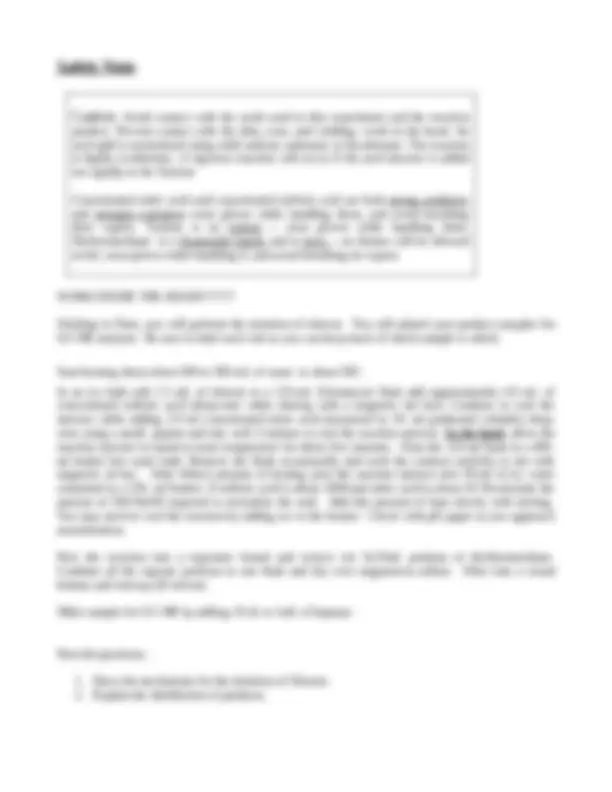



Study with the several resources on Docsity

Earn points by helping other students or get them with a premium plan


Prepare for your exams
Study with the several resources on Docsity

Earn points to download
Earn points by helping other students or get them with a premium plan
Community
Ask the community for help and clear up your study doubts
Discover the best universities in your country according to Docsity users
Free resources
Download our free guides on studying techniques, anxiety management strategies, and thesis advice from Docsity tutors
Material Type: Lab; Professor: Wright; Class: Introduction to Organic Chemistry; Subject: Chemistry; University: Wake Forest University; Term: Unknown 1989;
Typology: Lab Reports
1 / 3

This page cannot be seen from the preview
Don't miss anything!


a) Study electrophilic aromatic substitution reaction (EAS) b) Study regioselectivity for EAS reactions Chemicals Materials 150 – mL beaker Toluene 400-mL beaker Sulfuric acid (conc.) 125-mL flask Nitric acid (conc.) Separatory funnel Ice Dichloromethane 2M NaOH
Benzene rings are components of many important natural products and other useful organic compounds. Therefore, the ability to put substituents on a benzene ring, at specific positions relative to each other, is a very important factor in synthesizing many organic compounds. The two main reaction types used for this are both substitutions: Electrophilic Aromatic Substitution (EAS) and Nucleophilic Aromatic Substitution (NAS). The benzene ring itself is electron-rich, which makes NAS difficult, unless there are a number of strongly electron-withdrawing substituents on the ring. EAS, on the other hand, is a very useful method for putting many different substituents on a benzene ring, even if there are other substituents already present. Electrophilic Aromatic Substitution chapter describes the factors involved in the regioselectivity for EAS reactions using benzene rings, which already have substituents on them. In this experiment you will put a nitro (—NO 2 ) group on a benzene ring, which already has a methyl group, attached to it (methyl benzene - Toluene). The actual electrophile in the reaction is the nitronium ion (NO 2 +), which is generated in situ ("in the reaction mixture" HNO 3 /H 2 SO 4 ) using concentrated nitric acid and concentrated sulfuric acid. Here is the general mechanism for the the nitration of just a benzene ring. Remember, you will be nitrating toluene which can produce three different isomers as well as potentially di-nitration.